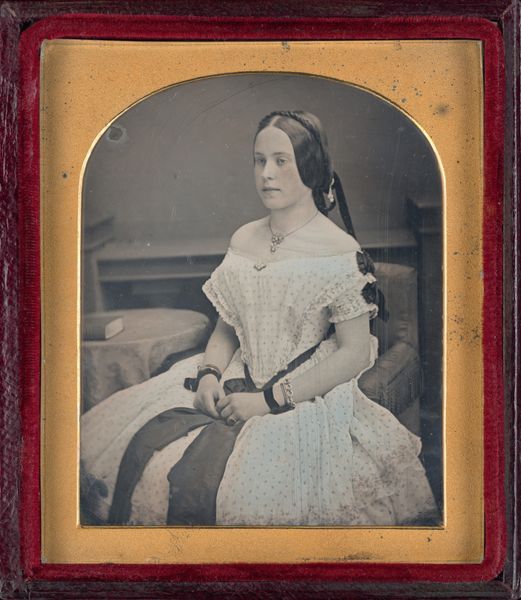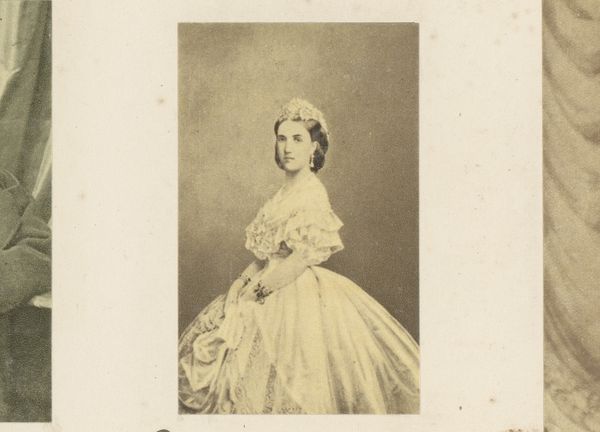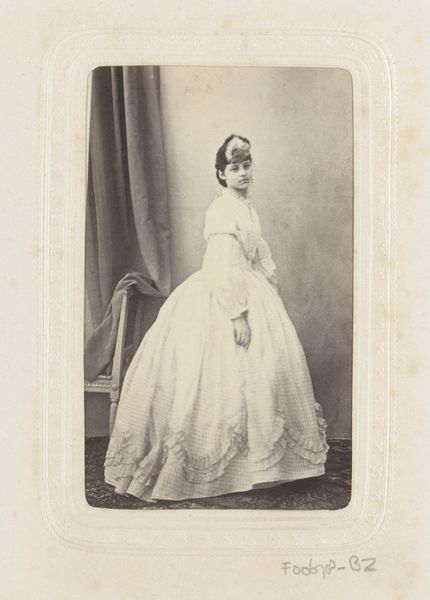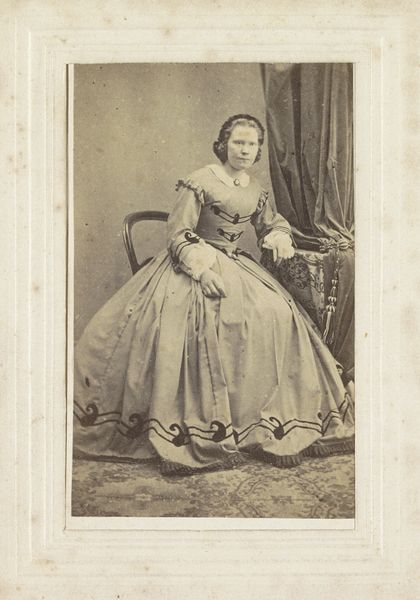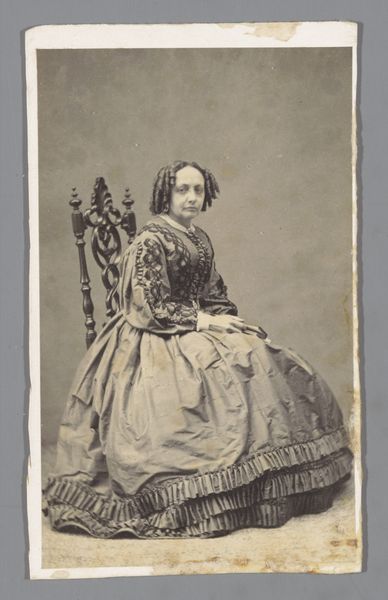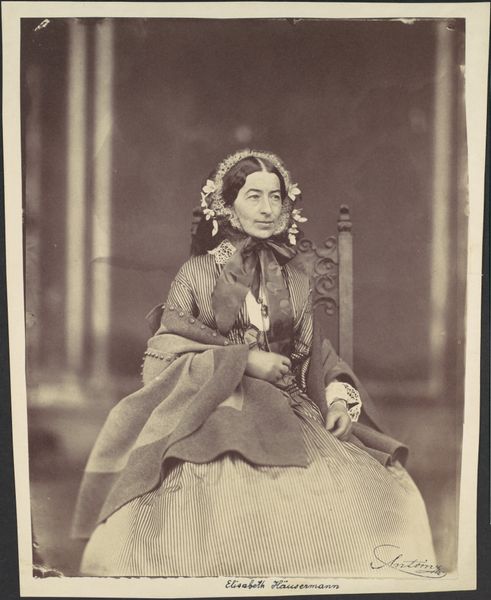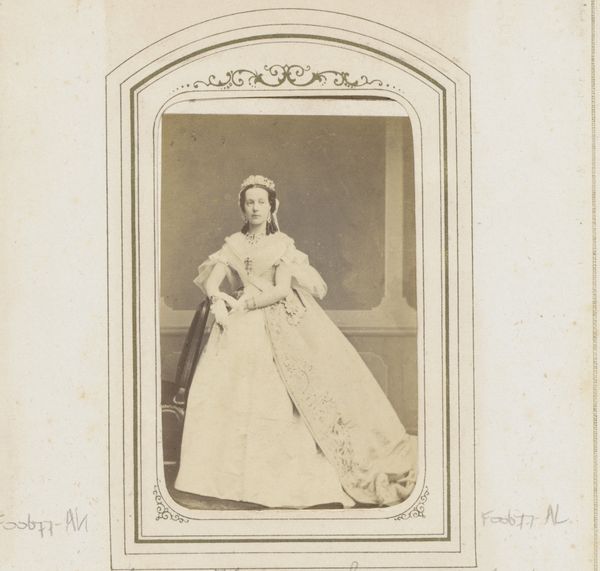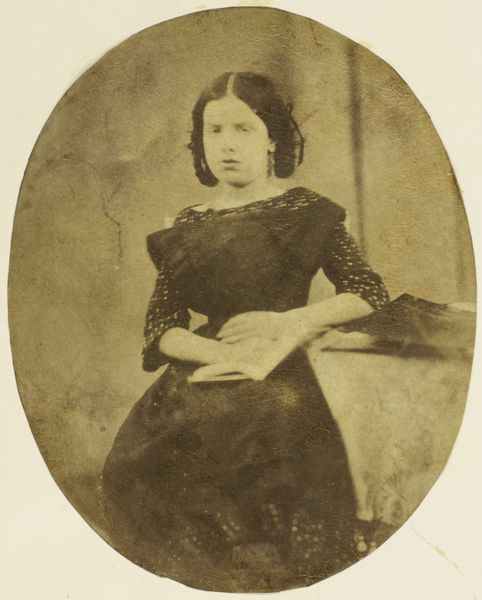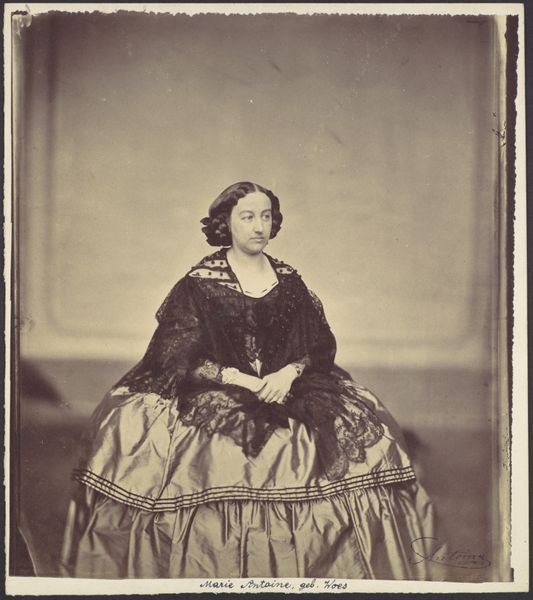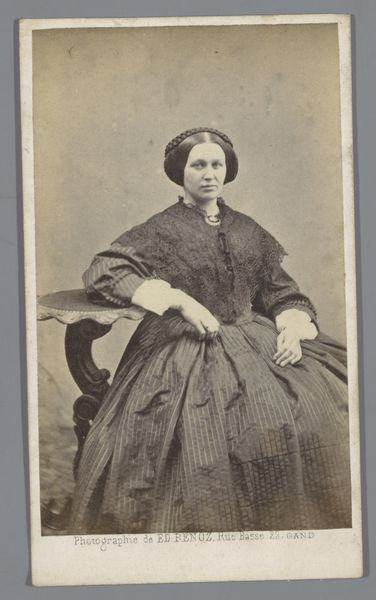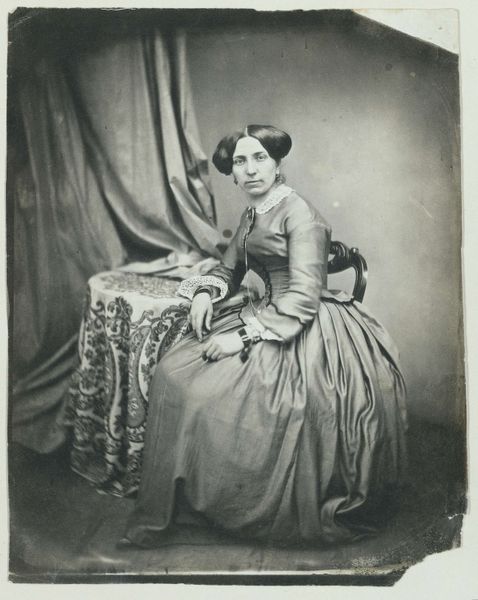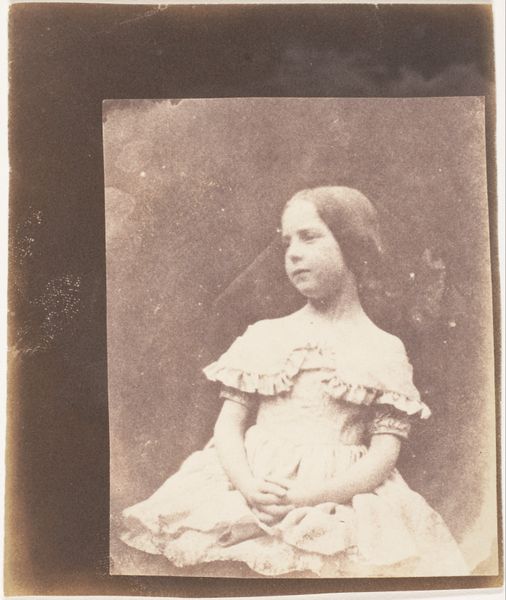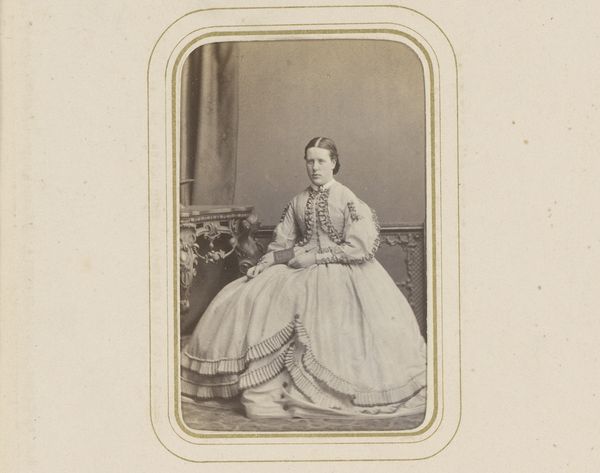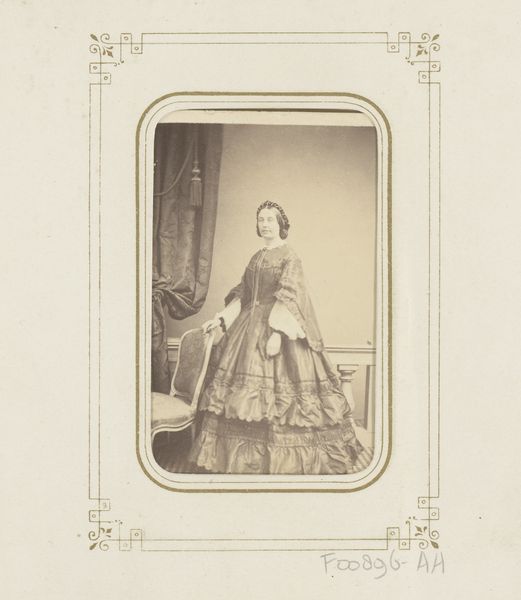
Dimensions: 25.1 x 19.4 cm. (9 7/8 x 7 5/8 in.)
Copyright: Public Domain
Editor: This albumen print, "Betty Held, vereh. Solöön-Engelsberg" by Franz Antoine, was created sometime in the 1850s or 60s. The sitter's magnificent white dress really commands attention. What’s most interesting to you about this photograph? Curator: For me, it’s about understanding the mechanics and economics of portraiture at that time. This albumen print represents a burgeoning industry of photographic production. Editor: How so? Curator: Think about it. Albumen printing required a lot of eggs. These were locally sourced and preserved through salting. Also, this method democratized portraiture, it allowed access to representation beyond the elite. Who would have previously commissioned an oil painting, now they could buy a photograph! This highlights a profound shift in both material access and the value placed on personal image. Editor: That makes me consider the economics for Antoine as well. Curator: Exactly! The albumen print suggests the establishment of photographic studios and potentially mass production of images for a growing middle class. Antoine wasn’t just an artist; he was also a businessperson navigating a new market and technologies. Editor: That makes a lot of sense. Thinking about all those materials and labor gives this image so much more meaning! Curator: Indeed, recognizing these practical considerations expands our understanding. The subject’s garments were purchased through the same mechanisms as the photo! Editor: Now I’m seeing this photograph not just as a portrait but as a artifact of larger social and economic systems at play. Curator: Precisely! It allows a rich, material exploration beyond surface appearance.
Comments
No comments
Be the first to comment and join the conversation on the ultimate creative platform.
